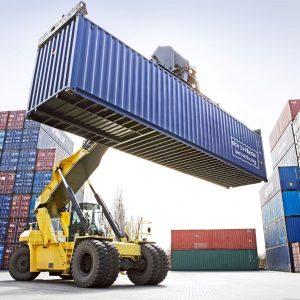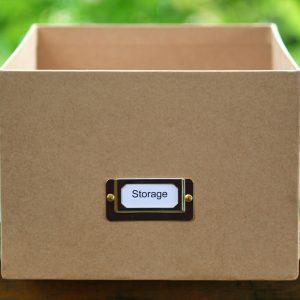Table of Contents
Moving to a new home is an exciting yet daunting experience. Whether you’re relocating across town or across the country, the process involves a multitude of tasks that can quickly become overwhelming. To ensure a smooth and stress-free move, it’s essential to have a well-organized plan in place. This comprehensive moving into a new home checklist will guide you through every stage of the relocation process, from the initial preparations to settling into your new home.
Moving is often ranked as one of life’s most stressful events, and for good reason. It involves not only the physical act of transporting your belongings but also the emotional and logistical challenges of leaving behind the familiar and embracing the new. However, with careful planning and a detailed moving into a new home checklist, you can minimize the stress and ensure that nothing is overlooked.
According to Move In Matters removals in Banbury, moving to a new home isn’t an easy task, and if you don’t stay composed, the day you move it may turn into a disaster, and the first thing you should check for when you move to a new place are pests. If you notice any signs of pests it’s best you call pest control services to check the house before you settle in with your family.
According to Aerial Services Italian satellite TV in London, moving to a new home also means worrying about your TV aerials, you wouldn’t want to miss out on your favorite TV show just because you’ve moved to a new place so having professionals like removals Manchester to deal with that the day you move to the house is best.
This guide is divided into three main sections: the pre-moving checklist, the during-moving checklist, and the post-moving checklist. Each section is designed to help you stay organized and on track, ensuring that every aspect of your move is handled efficiently. By following this checklist, you can focus on the excitement of starting a new chapter in your life, rather than the chaos of the move itself.
Pre-Moving Checklist
The pre-moving phase is arguably the most critical part of the relocation process. This is when you’ll lay the groundwork for a successful move by organizing, decluttering, and preparing your belongings for transport. The more thorough you are during this stage, the smoother the actual move will be.
1. Create a Moving Binder
- Purpose: A moving binder will serve as your central hub for all moving-related documents, receipts, and checklists.
- What to Include: Moving quotes, contracts, inventory lists, receipts, and important contact information.
2. Set a Budget
- Purpose: Moving can be expensive, so it’s essential to establish a budget to avoid unexpected costs.
- What to Include: Moving company fees, packing supplies, travel expenses, and any additional services (e.g., storage, cleaning).
3. Choose a Moving Date
- Purpose: Selecting a moving date early allows you to plan around it and secure moving services.
- Considerations: Work schedules, school calendars, and lease agreements.
4. Research and Hire a Moving Company
- Purpose: A reliable moving company can make all the difference in ensuring a smooth move.
- Steps: Get quotes from multiple companies, read reviews, and verify licenses and insurance.
5. Declutter and Organize
- Purpose: Reducing the number of items you need to move can save time and money.
- Steps: Sort through your belongings and decide what to keep, donate, sell, or discard.
6. Create an Inventory List
- Purpose: An inventory list helps you keep track of your belongings and ensures nothing is lost during the move.
- What to Include: A detailed list of all items, including their condition and estimated value.
7. Gather Packing Supplies
- Purpose: Having the right supplies on hand will make packing more efficient.
- What to Include: Boxes, packing tape, bubble wrap, markers, and labels.
8. Start Packing Non-Essentials
- Purpose: Begin packing items you won’t need in the weeks leading up to the move.
- What to Pack: Seasonal clothing, decor, books, and rarely used kitchen items.
9. Notify Important Parties
- Purpose: Informing relevant parties of your move ensures a seamless transition.
- Who to Notify: Employers, banks, insurance companies, utility providers, and subscription services.
10. Arrange for Child and Pet Care
- Purpose: Moving day can be chaotic, so it’s best to arrange for someone to look after children and pets.
- Options: Family, friends, or professional childcare and pet-sitting services.
11. Plan for Special Items
- Purpose: Some items require special handling or additional preparation.
- What to Consider: Fragile items, electronics, plants, and hazardous materials.
12. Confirm Moving Details
- Purpose: Double-checking all arrangements helps avoid last-minute surprises.
- What to Confirm: Moving date, time, and any special requests with the moving company.
During Moving Checklist
The during-moving phase is all about execution. This is when all your planning and preparation come to fruition. Staying organized and focused during this stage will help ensure that everything goes according to plan.
1. Pack an Essentials Box
- Purpose: An essentials box contains items you’ll need immediately upon arrival at your new home.
- What to Include: Toiletries, medications, snacks, chargers, and a change of clothes.
2. Label Boxes Clearly
- Purpose: Clear labeling makes it easier to unpack and locate items in your new home.
- What to Include: Room designation and a brief description of contents.
3. Conduct a Final Walkthrough
- Purpose: A final walkthrough ensures that nothing is left behind and that the property is in good condition.
- What to Check: All rooms, closets, and storage areas.
4. Verify the Moving Truck
- Purpose: Ensuring the moving truck is in good condition and properly equipped is crucial.
- What to Check: Size of the truck, cleanliness, and availability of necessary equipment (e.g., dollies, straps).
5. Supervise the Loading Process
- Purpose: Overseeing the loading process helps prevent damage to your belongings.
- What to Do: Direct movers on how to handle fragile items and ensure everything is loaded securely.
6. Keep Important Documents Handy
- Purpose: Having important documents readily accessible is essential during the move.
- What to Include: Moving contracts, inventory lists, and identification.
7. Take Photos of Your Belongings
- Purpose: Documenting the condition of your items provides evidence in case of damage.
- What to Photograph: High-value items and fragile goods.
8. Stay Hydrated and Take Breaks
- Purpose: Moving is physically demanding, so it’s important to stay hydrated and rest as needed.
- Tips: Keep water bottles and snacks on hand, and take short breaks to recharge.
9. Communicate with Movers
- Purpose: Clear communication with movers ensures that everything goes smoothly.
- What to Discuss: Any last-minute changes, special instructions, or concerns.
10. Lock Up and Secure the Old Property
- Purpose: Securing the old property prevents unauthorized access and potential theft.
- What to Do: Lock all doors and windows, and return keys to the landlord or new owner.
Post-Moving Checklist
The post-moving phase is all about settling into your new home and tying up any loose ends from the move. This stage is crucial for ensuring that your transition is as seamless as possible.
1. Inspect Your New Home
- Purpose: Inspecting your new home before unpacking helps identify any issues that need addressing.
- What to Check: Utilities, appliances, and overall condition of the property.
2. Unpack the Essentials Box
- Purpose: Unpacking the essentials box first ensures that you have immediate access to necessary items.
- What to Do: Set up the bathroom, kitchen, and bedroom with essential items.
3. Conduct a Box Inventory
- Purpose: Verifying that all boxes have arrived and are accounted for prevents loss or theft.
- What to Do: Cross-reference the inventory list with the boxes received.
4. Set Up Utilities and Services
- Purpose: Ensuring that utilities and services are up and running is essential for comfort and convenience.
- What to Set Up: Electricity, water, gas, internet, and cable.
5. Update Your Address
- Purpose: Updating your address ensures that you receive mail and important documents.
- Who to Notify: Post office, banks, credit card companies, and government agencies.
6. Explore the Neighborhood
- Purpose: Familiarizing yourself with the neighborhood helps you feel more at home.
- What to Do: Locate nearby grocery stores, schools, parks, and other amenities.
7. Register for Local Services
- Purpose: Registering for local services ensures that you have access to essential resources.
- What to Register For: Voter registration, library cards, and local healthcare providers.
8. Unpack and Organize
- Purpose: Unpacking and organizing your belongings helps you settle in more quickly.
- Tips: Start with high-traffic areas like the kitchen and living room, and work your way through the house.
9. Dispose of Packing Materials
- Purpose: Properly disposing of packing materials keeps your new home clean and clutter-free.
- Options: Recycle boxes and packing materials, or donate them to others who are moving.
10. Review Moving Expenses
- Purpose: Reviewing moving expenses helps you stay within budget and identify any discrepancies.
- What to Do: Compare receipts and invoices with your initial budget, and address any issues with the moving company.
11. Send Thank-You Notes
- Purpose: Sending thank-you notes to those who helped with the move shows appreciation and strengthens relationships.
- Who to Thank: Friends, family, and professional movers.
12. Plan a Housewarming Party
- Purpose: A housewarming party is a great way to celebrate your new home and connect with neighbors.
- Tips: Keep it simple and focus on creating a welcoming atmosphere.
Conclusion
Moving is a complex process that requires careful planning and execution. By following this comprehensive moving checklist, you can ensure that every aspect of your relocation is handled efficiently and effectively. From the initial preparations to settling into your new home, this guide will help you stay organized and focused, allowing you to enjoy the excitement of starting a new chapter in your life.
Remember, the key to a successful move is preparation. By taking the time to plan and organize, you can minimize stress and make the transition as smooth as possible. Whether you’re moving across town or across the country, this checklist will serve as your roadmap to a successful relocation. Happy moving!






Hi Sir, I am a link builder & I have got a good number of quality sites, where I can help you to build contextual links that help you to get good page rank and domain authority.Let me know if you’re interested,
Kindly contact us by email at revealhomestyle@gmail.com
I definitely agree that checking locks, doors, and windows is essential before moving into a new home. I can easily see my family being distracted by a beautiful house without considering how safe the place is, so this should be something I should be responsible for. Once we find a home for sale that we like, I’ll take it upon myself to replace any faulty lock or window that I find.